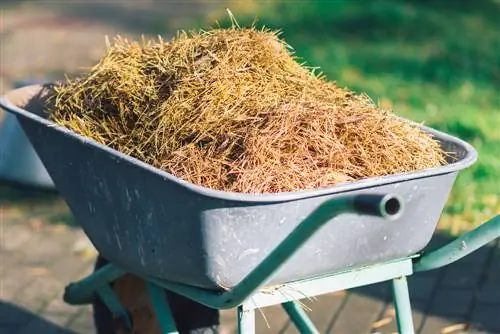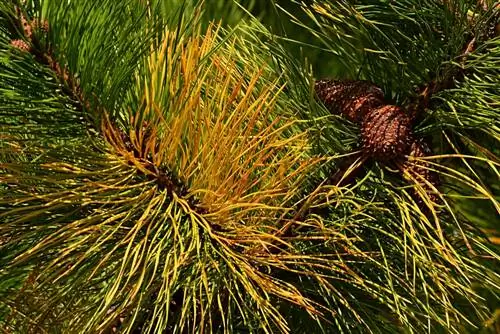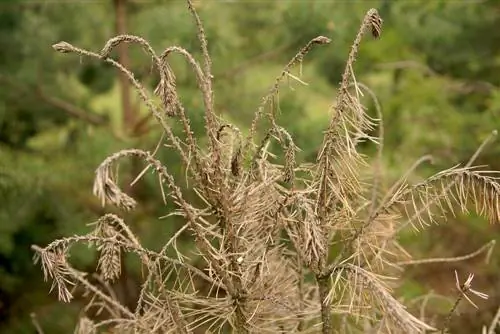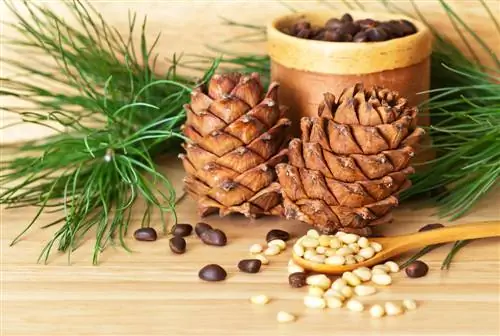- Author admin [email protected].
- Public 2023-12-16 16:46.
- Last modified 2025-01-23 11:22.
Anyone who has coniferous trees in their garden is regularly faced with the question of how to properly dispose of needles. If the needles fall to the ground, they create an acidic environment. Alternatively, the material can be composted, provided certain aspects are taken into account.
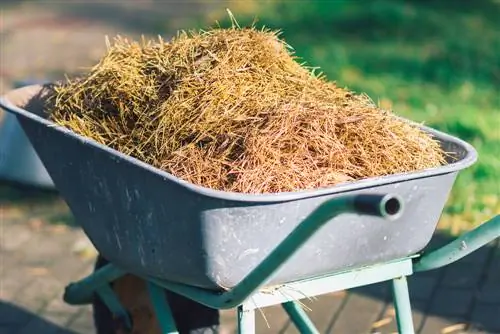
Can you compost pine needles?
Fir needles can be composted by layering them in small quantities with kitchen scraps, garden soil and lawn clippings. The addition of diluted nettle manure as a compost accelerator promotes the decomposition process. The finished coniferous compost is particularly suitable for plants that prefer acidic soils.
Features
Needles have a sturdy structure and are covered by a layer of wax, which protects the leaf structures from excessive water loss. For this reason, microorganisms need more time to fully utilize the plant material. However, there are differences between different tree species. While soft and thin larch needles rot quickly, spruce needles decompose within two to three years. The rotting process of pine needles takes twice as long.
Composting
The correct compost structure is of great importance. If you sprinkle pine needles on the compost in manageable quantities, you will improve composting. Kitchen waste that accumulates in the compost bin, especially over the winter, contains a lot of water. Dry needles loosen the substrate structure and ensure better ventilation. This promotes the decomposition processes because the microorganisms can work better. At the same time, the needle leaves are moistened by kitchen waste containing water, so that they decompose more quickly.
How to do it right:
- pay attention to well-structured layering
- Store garden soil, needles and turf layer on top of each other
- Mix nettle manure with water in a ratio of 1:10
- Pour broth over each layer as a compost accelerator
What the compost is suitable for
Compost soil can be used in many ways. Coniferous compost is suitable for plants that prefer a more acidic environment. Ericaceous and heather plants, as well as camellias, hydrangeas, rhododendrons and skimmias, grow in soils with a low pH value. If the material in the compost has not yet completely decomposed, you can still safely use it in the garden. The partially rotting needles improve the soil structure and ensure better oxygen supply. Over time they are consumed by the soil fauna.
Tip
Fresh pine needles provide an ideal substrate for mulching. The layer keeps slugs away and prevents the soil from drying out. A layer of mulch about two centimeters thick that has been enriched with a little horn meal (€6.00 on Amazon) for a better nitrogen supply. is sufficient.

